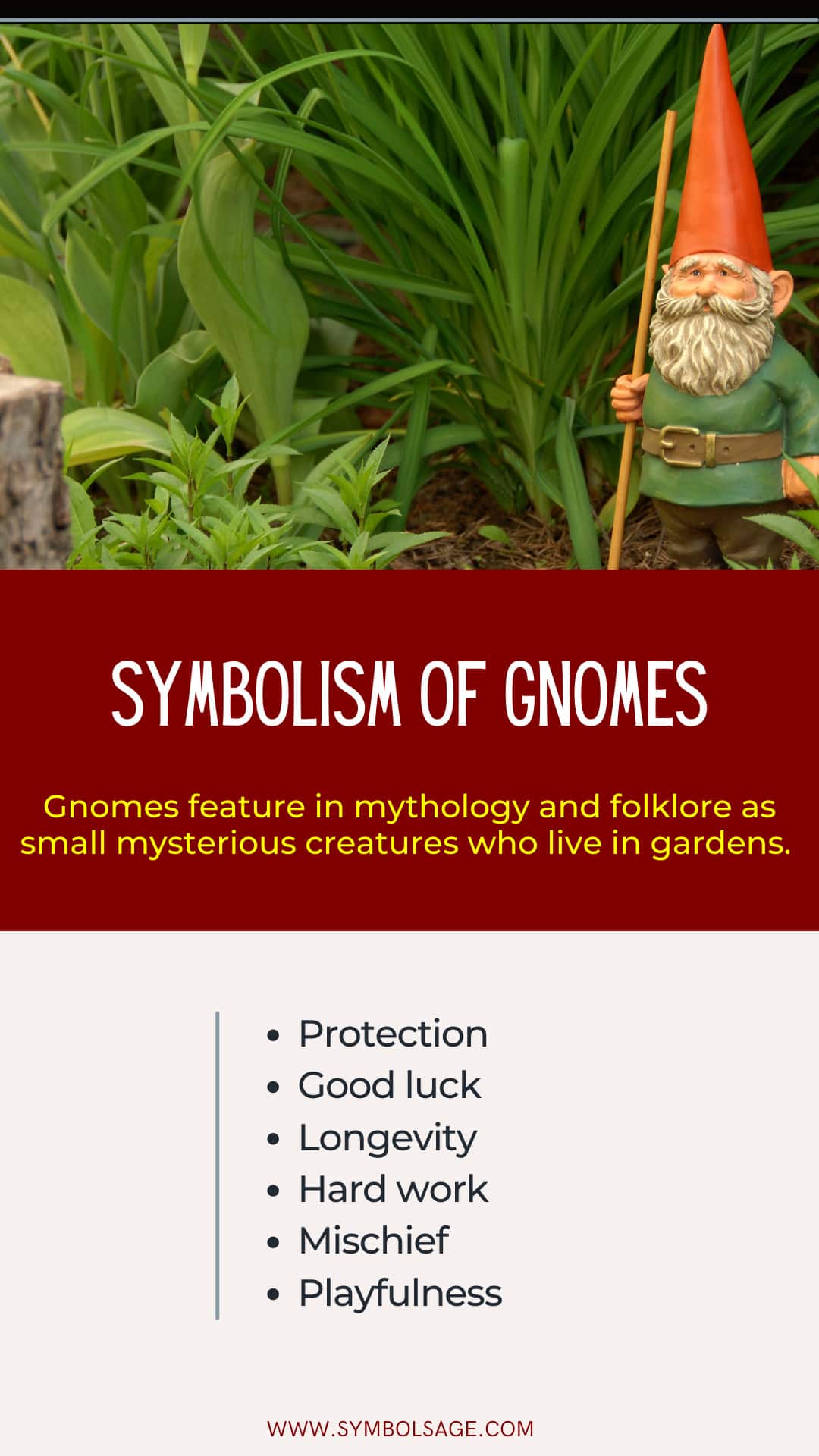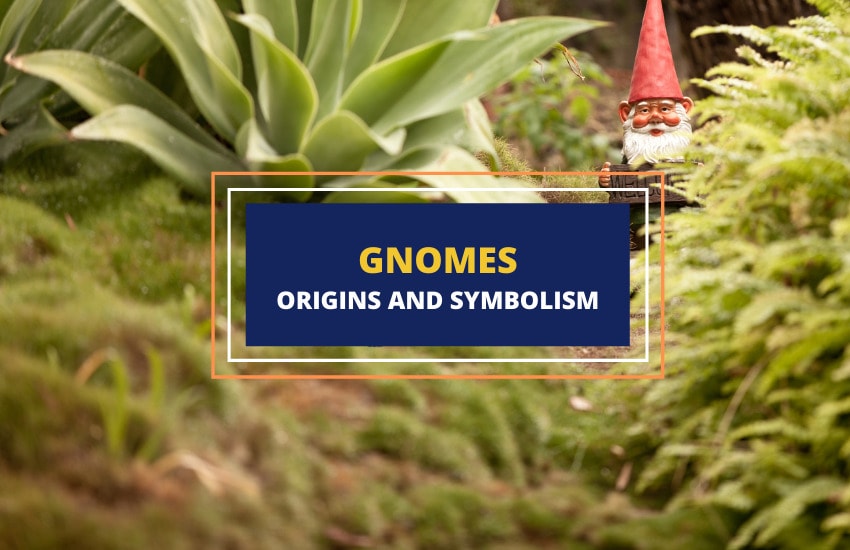
Table of Contents
Gnome statues must be history’s most bizarre garden accessories. These little statues have been around for centuries in one form or another and have a rich heritage in European gardens. Let’s look a little more closely at the symbolism of gnomes, their significance in folklore, and why people love to display them in their gardens.
What Are Gnomes?
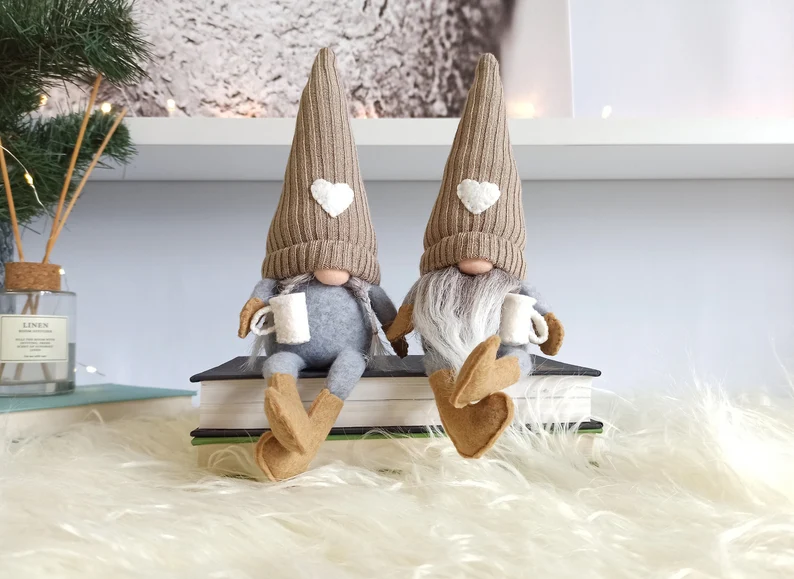
In folklore, gnomes are small supernatural spirits that live underground in caves and other hidden places. These folkloric creatures are commonly depicted as little old men with beards, usually hunchbacked. They were commonly depicted as wearing pointed red hats.
The term gnome was derived from the Latin gnomus, which was used by the 16th-century Swiss alchemist Paracelsus, who described gnomes as beings who were capable of moving through the earth, just as fish move through the water. Some speculate that he may have been inspired by the Greek term genomos, which translates as earth dweller.
The characteristics of gnomes as mythical creatures vary in different cultures. Generally, gnomes are believed to be much smaller than dwarfs and elves, as they only stand about one to two feet tall. According to folklore, gnomes aren’t seen in public because of their desire to hide from people.
The ancestral gnomes in many folktales and sculptures in Europe have many names, such as bargegazi and dwarf. The French term bargegazi literally means frozen beard, which stemmed from the French belief that the creature originated in a Siberian landscape of ice and snow. Another French term nain, meaning dwarf, is used to refer to the small statues of gnomes.
Meaning and Symbolism of Gnomes
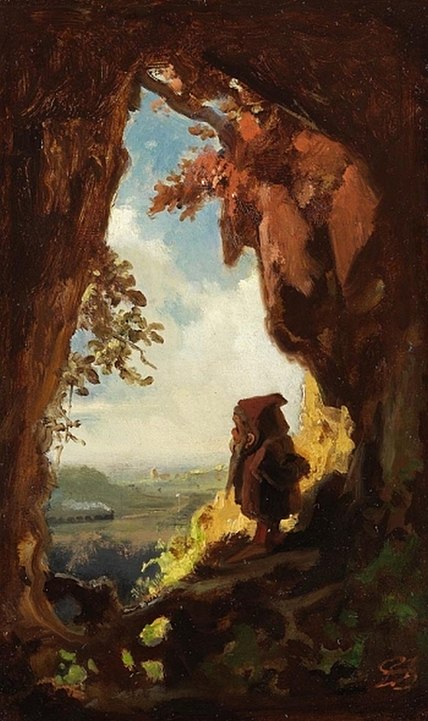
A garden can be seen as a representation of the natural world so it’s also seen as home to spirits of all kinds, including gnomes. These folkloric creatures reveal a perspective of the past, and their symbolism is one of the reasons why people put them in gardens. Here are some of their meanings:
1. Guardianship
According to legend, gnomes are the protectors of the earth and its treasures. They guard precious stones and metals, especially underground. This has given gnomes the symbolism of being guardians of the earth and guardians in general.
2. Good Luck
In modern times, garden gnomes are believed to bring good luck to the household. This is why some people keep sculptures and images of gnomes in the garden and around the house – to attract prosperity and good fortune.
2. Protection
In folklore, gnomes are believed to look after homes, gardens, and nature by protecting them from thieves and keeping pests from wreaking havoc. It’s also believed that their hats are like protective helmets. The gnome’s hat in folklore is believed to have been derived from the padded red hats of the miners of southern Germany. The miners wore the hats to protect themselves from falling debris and allowed them to be visible in the dark.
3. Hard Work and Craftsmanship
In literature and popular culture, gnomes are associated with hard work and craftsmanship. Folklore often speaks of gnomes as skilled artisans and craftsmen, especially in metalworking and gem cutting.
In the book Gnomes by Wil Huygen, there are different types of gnomes based on their habitat—garden gnomes, house gnomes, woodland gnomes, farm gnomes, dune gnomes, and Siberian gnomes. These creatures all symbolize hard work. Their location is important in folklore, as it reveals not only their residence but also their daily tasks.
In The Hobbit by J. R. Tolkien, gnomes are depicted as hard-working creatures in a woodland world. In the films The Full Monty and Amélie, the creatures play key roles in the stories and follow working-class characters on their journeys to self-fulfillment.
4. Wisdom
With their old age and ancient knowledge, gnomes are sometimes seen as wise beings. Their long beards are a symbol of their age and wisdom. Some lore depicts gnomes’ ability to help humans to grow bountiful gardens through their knowledge of herbology. In traditional tales, gnomes are helpers in the garden, assisting with landscape chores during the night, and turning into stone during the day.
5. Mischievousness
However, gnomes aren’t always helpful, as they can sometimes be mischievous. They like to play tricks on people and other creatures.
History of Garden Gnomes
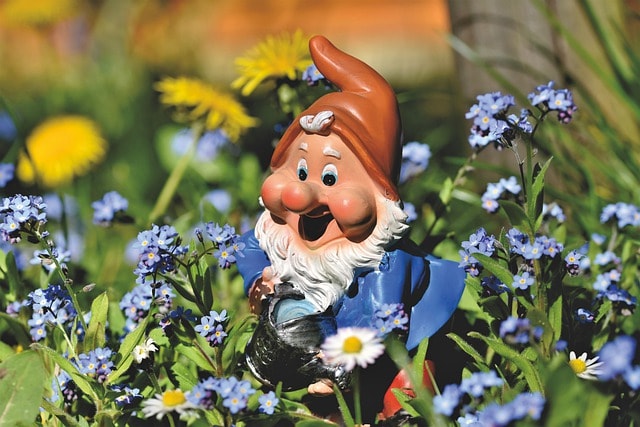
The tradition of garden statuary can be traced back to ancient Rome. Various gnome-like statues made their appearance in Renaissance gardens in Italy. However, the garden gnomes we know today come from Germany and are inspired by German folkloric dwarfs.
The Renaissance Period
In the Boboli Gardens in Florence, Italy, there’s a statue of a dwarf, nicknamed Morgante, at the court of Cosimo the Great, the duke of Florence and Tuscany. This figure is called gobbo in Italian, meaning hunchback or dwarf.
By 1621, French engraver Jacques Callot spent his career in Italy and published a collection of designs for statues of gobbi entertainers. His collections became influential and statues based on his designs began appearing in gardens all over Europe, especially in the German-speaking countries.
Back in that time, many people in northern Europe believed in little people who worked underground. Under the influence of the Italian gobbi, porcelain figures of gnomes were created in Germany, though most of them were designed to be kept indoors.
The Earliest English Garden Gnomes

Gnome statues were a favorite of Victorian gardeners, but the earliest gnomes in English gardens were imported from Germany. In 1847, Sir Charles Isham bought 21 terracotta gnomes on his visit to Nuremberg and displayed them on his Lamport Hall in Northamptonshire. The gnomes were depicted pushing wheelbarrows and carrying pickaxes and spades as if they were mining.
The gnomes in Charles Isham’s gardens were widely praised, but when he died, they were disposed of by his daughters who disliked the statues. Fifty years later, Sir Gyles Isham restored the place and discovered one of the gnomes hidden in a crevice. It has been named Lampy and is said to be the most valuable garden gnome in England. In fact, Lampy has been insured for £1 million!
At the Chelsea Flower Show
Attended by members of the British Royal Family, the Chelsea Flower Show is a garden show held annually in Chelsea, London. Ever since it began in 1913, gnomes were excluded from garden exhibits. Even though gnomes were expensive pieces of garden art in the 19th century—like Isham’s terracotta and hand-painted gnomes from Germany—they were later made inexpensively out of concrete or even plastic.
Therefore, garden gnomes are seen as strictly for the masses and aren’t commonly incorporated in class-conscious Britain gardens today. However, at the 100th anniversary of London’s Chelsea Flower show, gnomes were welcomed for just a year. For some, garden gnomes represented the social divide on garden design, which was broken for just a season, then the show went back to being a gnome-free zone again.
In Popular Culture
In the 1930s, gnomes became popular in the garden again because of the appeal of Walt Disney’s Snow White and the Seven Dwarves. Even though the creatures in the story are dwarfs, many of their characteristics would later become visual representations of gnomes. Gnomes wearing red hats, having rosy cheeks and short stature showed up in many homes and gardens.
Gnomes also made appearances in C.S. Lewis’s The Chronicles of Narnia where they were also called Earthmen. In J.K. Rowling’s Harry Potter series, they are depicted as garden pests who hide in bushes. In the 1970s, gnomes were featured on George Harrison’s album cover, All Things Must Pass. In 2011, the animated film Gnomeo and Juliet, a version of Shakespeare’s play, represented Capulets as red gnomes and Montagues as blue gnomes.
For years now, the meme “You’ve been gnomed,” has been popular. This refers to the common practice of stealing a garden gnome (called gnoming). A person would take the stolen gnome on a journey and then return it to its owner with lots of photographs.
The Russian Revolution of Gnomes
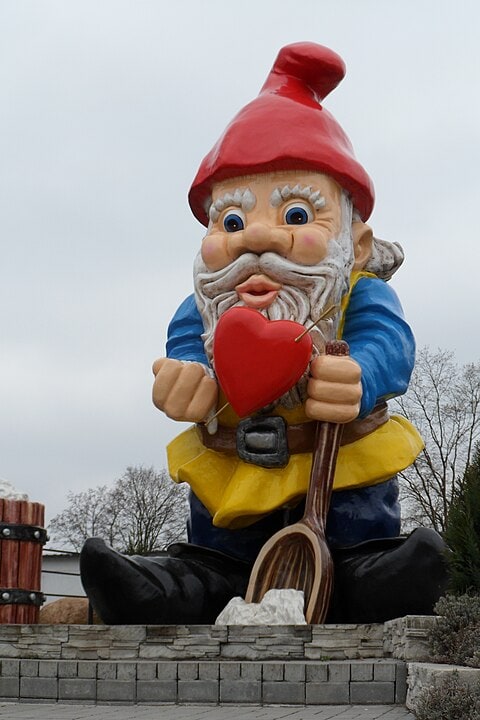
In Poland, several statues of gnomes or dwarves can be found throughout the country. Each has a name and a detailed backstory. Most of them are swinging from the lampposts and peeking out from the doorways as if they’re little residents. The society of gnomes includes merchants, bankers, postmen, doctors, professors, and gardeners.
Each statue is a nod to the anti-Soviet resistance movement – Orange Alternative – that used gnomes or dwarves as its symbol. In the 1980s, the group peacefully protested through surrealist-inspired street art—the paintings of little gnomes. Later, there were whimsical public marches through the streets of Wroclaw, where people wore orange caps. Hence, it was called “Revolution of Gnomes” and also, “Revolution of Dwarves”.
FAQ About Gnomes
Gnomes like to live in secret underground places and enjoy forests and gardens. They have been spoken of on every continent and can adapt to most living conditions as long as there is enough food.
Gnomes are usually portrayed as wearing a pointed red cap and are never seen outdoors without one. According to folklore, a gnome baby is given his first cap when he is born. The caps are usually made of felt made from wool that is dyed with plant material. The cap is a form of protection from falling sticks. They are also used as storage places, much as we use pockets.
Gnomes rarely have time for humans, whom they see as wasteful destroyers of the environment. However, they have on occasion been said to help humans that they feel are particularly hardworking or worthy.
While male gnomes are usually depicted in garden ornaments, there are, of course, lady gnomes. They are rarely heard about though because they remain underground caring for their homes and children and preparing herbal medicines until after dark.
Gnomes have long been considered as good luck symbols. Because they are custodians of the earth and all its riches, they are said to provide protection over buried treasure, crops, and livestock. Farmers would often hide a gnome statue in a barn or corner of the vegetable garden to protect what grew there.
To Conclude
Gnomes became popular in England in the 19th century when they were featured in landscape gardens. Later, they became the inspiration for several works of art, literature, and films. Today, these little underground-dwelling humanoids remain popular for their sense of playfulness and lighthearted humorous touch, adding a whimsical feel to any garden.
